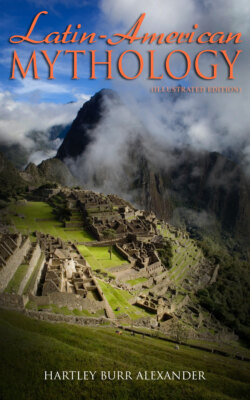Читать книгу Latin-American Mythology (Illustrated Edition) - Hartley Burr Alexander - Страница 4
AUTHOR'S PREFACE
ОглавлениеIn aim and plan the present volume is made to accord as nearly as may be with the earlier-written volume on the mythology of the North American Indians. Owing to divergence of the materials, some deviations of method have been necessary, but in their main lines the two books correspond in form as they are continuous in matter. In each case the author has aimed primarily at a descriptive treatment, following regional divisions, and directed to essential conceptions rather than to exhaustive classification; and in each case it has been, not the specialist in the field, but the scholar with kindred interests and the reader of broadly humane tastes whom the author has had before him.
The difficulties besetting the composition of both books have been analogous, growing chiefly from the vast diversities of the sources of material; but these difficulties are decidedly greater for the Latin-American field. The matter of spelling is one of the more immediate. In general, the author has endeavoured to adhere to such of the rules given in Note 1 of Mythology of All Races, Vol. X (pp. 267-68), as may be applicable, seeking the simplest plausible English forms and continuing literary usage wherever it is well established, both for native and for Spanish names (as Montezuma, Cortez). Consistency is pragmatically impossible in such a matter; but it is hoped that the foundational need, that of identification, is not evaded.
The problem of an appropriate bibliography has proven to be of the hardest. To the best of the author's belief, there exists, aside from that here given, no bibliography aiming at a systematic classification of the sources and discussions of the mythology of the Latin-American Indians, as a whole. There are, indeed, a considerable number of special bibliographies, regional in character, for which every student must be grateful; and it is hoped that not many of the more important of these have failed of inclusion in the bibliographical division devoted to "Guides"; but for the whole field, the appended bibliography is pioneer work, and subject to the weaknesses of all such attempts. The principles of inclusion are: (1) All works upon which the text of the volume directly rests. These will be found cited in the Notes, where are also a few references to works cited for points of an adventitious character, and therefore not included in the general bibliography. (2) A more liberal inclusion of English and Spanish than of works in other languages, the one for accessibility, the other for source importance. (3) An effort to select only such works as have material directly pertinent to the mythology, not such as deal with the general culture, of the peoples under consideration,—a line most difficult to draw. In respect to bibliography, it should be further stated that it is the intent to enter the names of Spanish authors in the forms approved by the rules of the Real Academia, while it has not seemed important to follow other than the English custom in either text or notes. It is certainly the author's hope that the labour devoted to the assembling of the bibliography will prove helpful to students generally, and it is his belief that those wishing an introduction to the more important sources for the various regions will find of immediate help the select bibliographies given in the Notes, for each region and chapter.
The illustrations should speak for themselves. Care has been taken to reproduce works which are characteristic of the art as well as of the mythic conceptions of the several peoples; and since, in the more civilized localities, architecture also is significantly associated with mythic elements, a certain number of pictures are of architectural subjects.
It remains to express the numerous forms of indebtedness which pertain to a work of the present character. Where they are a matter of authority, it is believed that the references to the Notes will be found fully to cover them; and where illustrations are the subject, the derivation is indicated on the tissues. In the way of courtesies extended, the author owes recognition to staff-members of the libraries of Harvard and Northwestern Universities, to the Peabody Museum, the Boston Museum of Fine Arts, the American Museum of Natural History, and the Museum of the University of Nebraska. His personal obligations are due to Professor Frank S. Philbrick, of the Northwestern University Law School, and to the Assistant Curator of the Academy of Pacific Coast History, Dr. Herbert I. Priestley, for valuable suggestions anent the bibliography, and to Dr. Hiram Bingham, of the Yale Peruvian Expedition, for his courtesy in furnishing for reproduction the photographs represented by Plates XXX and XXXVIII. His obligations to the editor of the series are, it is trusted, understood.
The manuscript of the present volume was prepared for the printer by November of 1916. The ensuing outbreak of war delayed publication until the present hour. In the intervening period a number of works of some importance appeared, and the author has endeavoured to incorporate as much as was essential of this later criticism into the body of his work, a matter difficult to make sure. The war also has been responsible for the editor's absence in Europe during the period in which the book has been put through the press, and the duty of oversight has fallen upon the author who is, therefore, responsible for such editorial delinquencies as may be found.
HARTLEY BURR ALEXANDER.
Lincoln, Nebraska,
November 17, 1919.
